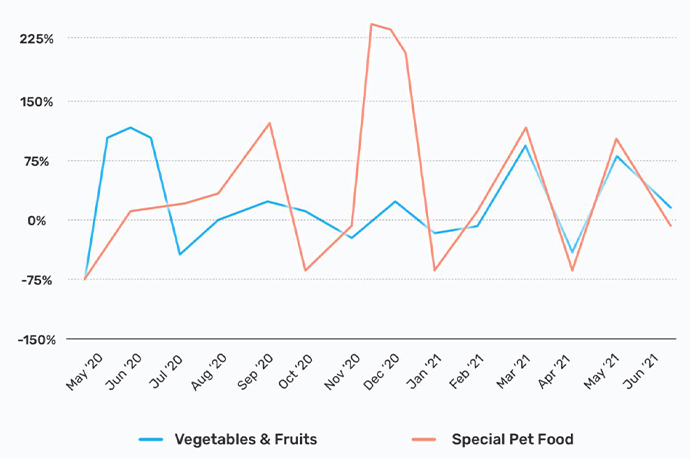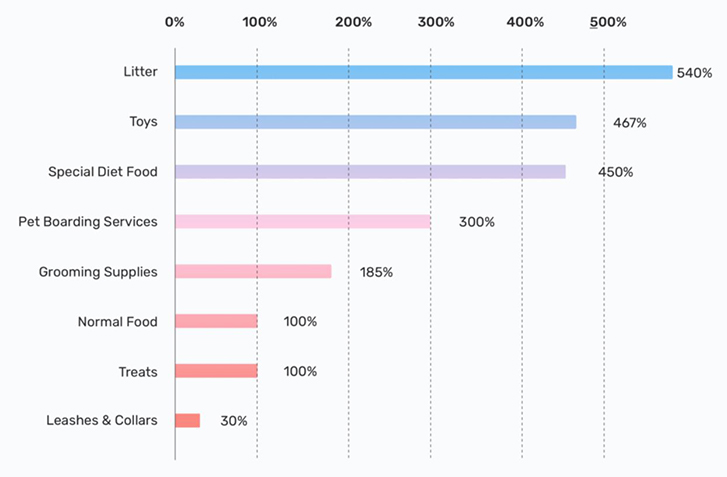TORONTO — Consumer spending on pet products was up by more than 115% in both the United States and Canada in June 2021 compared to spending levels from May 2020, according to Sensibill’s July Barcode Report on pandemic-era pet spending trends.
The market insights company compiled “millions” of receipts from pet owners across the United States and Canada, extracting three key pet spending trends from the data.
Overall, pet spending was up 143% in the United States and 117% in Canada between June 2021 and May 2020. The company attributed this to the increased time at home over the last year, and the lasting effects of consumers becoming more bonded with their pets — and acquiring new pets — during the pandemic.
Additionally, Sensibill cross-referenced consumer spending on specialized pet diets — including weight maintenance formulas, hairball control cat foods and other solutions-based pet foods — with spending on vegetables and fruits for themselves, revealing an interesting trend.
 Specialty pet food sales compared to sales of vegetables and fruits in Canada between May 2020 and June 2021. (Source: Sensibill)
Specialty pet food sales compared to sales of vegetables and fruits in Canada between May 2020 and June 2021. (Source: Sensibill) “The pet industry has always been lucrative for businesses of all sizes, but this month’s report reveals how much consumers value the health and care of their pets as well as themselves,” said Izabella Gabowicz, chief operating officer at Sensibill. “For example, consumers who increased their own spending on healthy habits such as fruit and vegetable consumption spent more money on their pets’ specialty food and grooming.”
In the United States, spending on special pet foods increased by 450%, compared to a 100% increase in normal pet food spending. Spending on treats was also up 100% over the same period.
 Spending increases by percent of pet products between May 2020 and June 2021. (Source: Sensibill)
Spending increases by percent of pet products between May 2020 and June 2021. (Source: Sensibill) In Canada, spending on special pet foods was up by 350%, compared to a 200% increase in normal pet food spending. Spending on pet boarding services was down 80% over the same period, and spending on leashes and collars was down 93%, according to Sensibill.
“Understanding insights such as these can help businesses be more proactive about how they promote their products and services, highlighting health and wellness benefits,” Gabowicz continued.
Sensibill reported that new dog owners in the United States outnumber new cat owners over this period, with roughly 1.2 times the number of new dog owners compared to new cat owners. In Canada, however, there are now two times more new cat owners than new dog owners, the company stated.
Read Sensibill’s full July Barcode Reports for the United States and Canada.
Keep up with the latest pet food trends on our Trends page.





